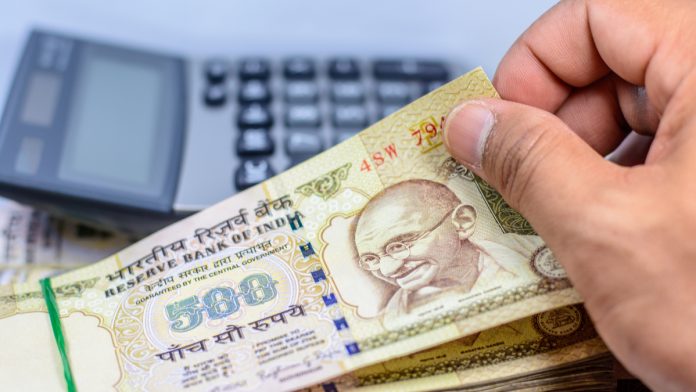- Indian Rupee (INR) extends losses in risk off trade
- Nifty & Sensex close -1.5% lower
- US Dollar (USD) rises on safe haven flows
- US manufacturing & service sector PMIs
The US Dollar Indian Rupee (USD/INR) exchange rate is advancing on Friday, extending gains for a second straight session. The pair settled +0.1% at 72.96 on Thursday. At 12:45 UTC, USD/INR trades +0.1% at 73.05. The pair is on track to lose -0.16% across the week, its second straight week of losses.
The Indian Rupee traded lower, tracing domestic equities southwards. Indian shares ended lower on Friday, pulling back from record levels hit in the previous session. Heavyweight banks and metal stocks dragged on the benchmark indices.
The Nifty fell 1.5% and the Sensex also declined 1.5%, its first weekly drop in 12 weeks. The number of foreign investors in the market have declined sharply as risk sentiment has taken a turn for the worse on Friday.
Falling oil prices are offering some support. West Texas Intermediate trades -2.5% amid rising demand concerns as covid cases continue to rise in China the world’s largest importer of crude oil.
Fears over the rising number of covid cases and tighter lockdown restrictions globally is weighing on risk appetite across the globe, hitting demand for riskier assets and currencies, such as stocks and the Indian Rupee. Meanwhile the US Dollar is pushing higher as investors seek out its safe haven properties.
The US Dollar Index (DXY) which measures the US Dollar versus its major peers trades +0.1% at the time of writing.
Whilst optimism surrounding a $1.9 trillion covid stimulus package has dragged on the US Dollar, today this is being overshadowed by covid fears and the ongoing impact on the economy. Yesterday’s jobless claims revealed 900,000 Americans signed up for unemployment benefits last week. This was an improvement on the previous week’s 965,000 although still shows that business are struggling under covid restrictions.
Attention will now turn to US manufacturing and service sector PMI data.




